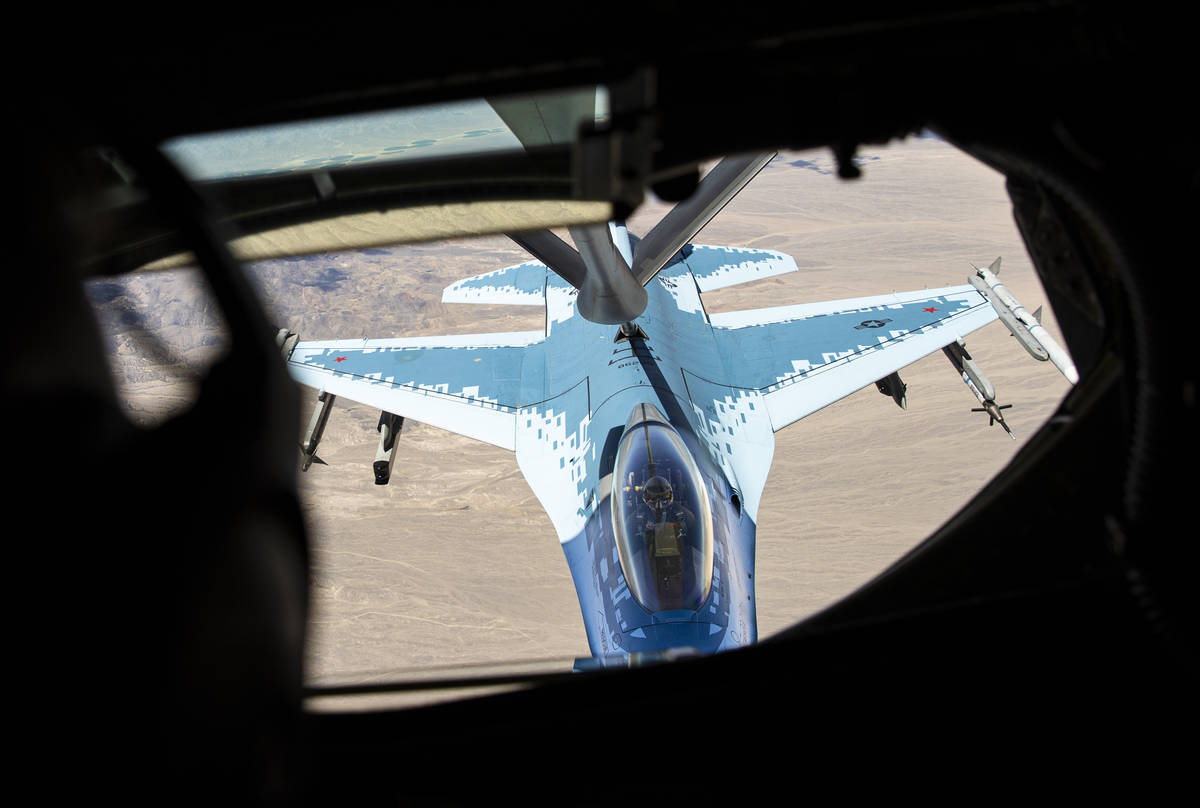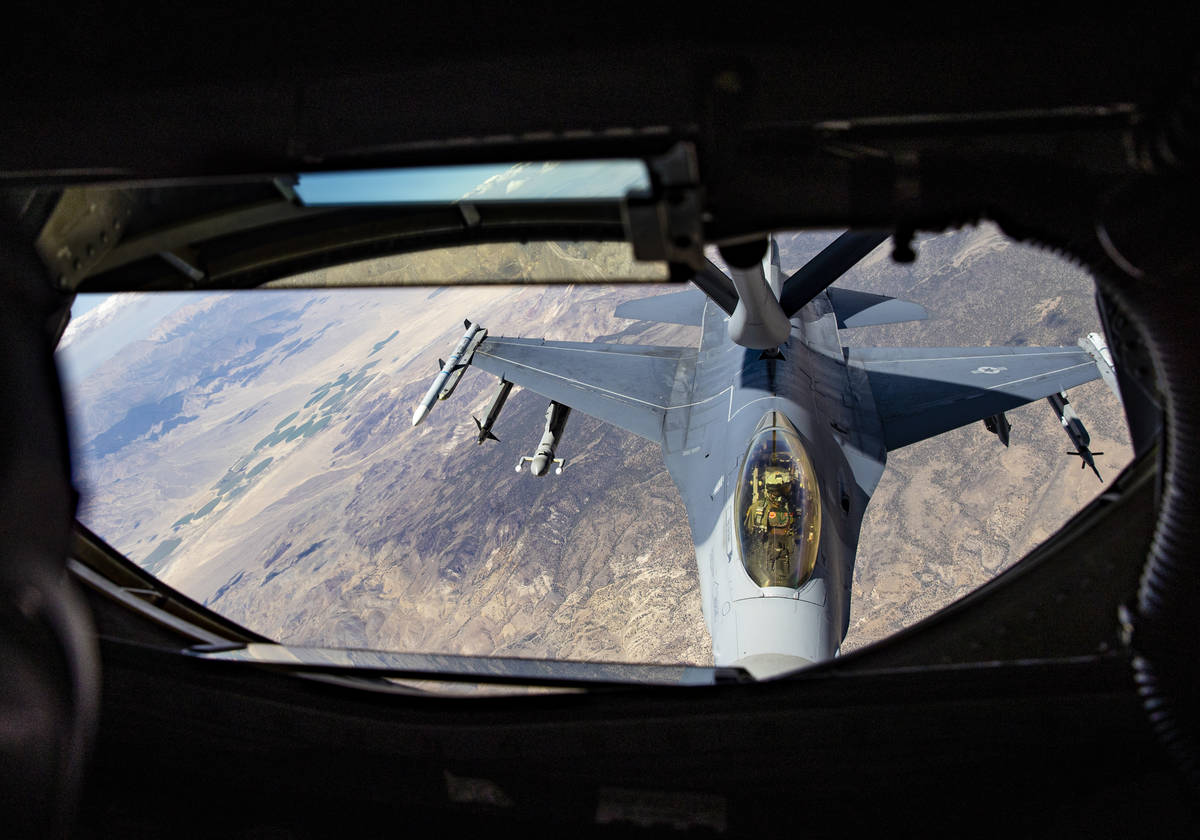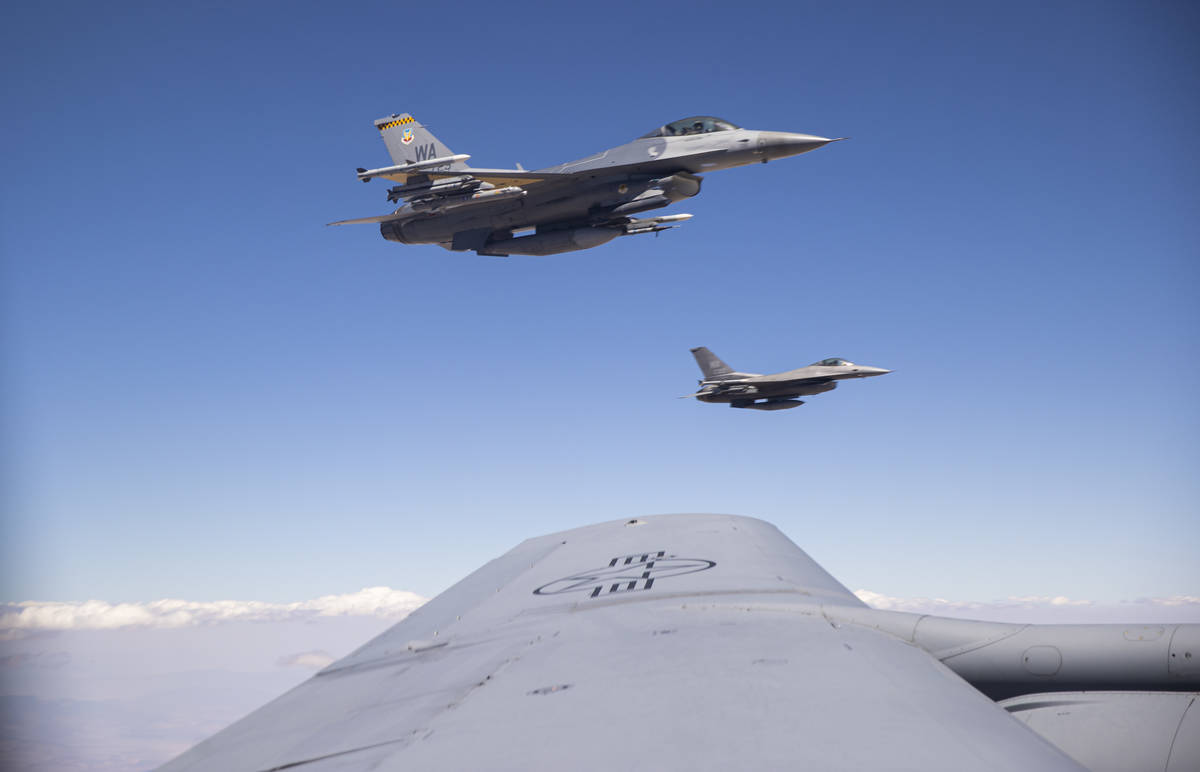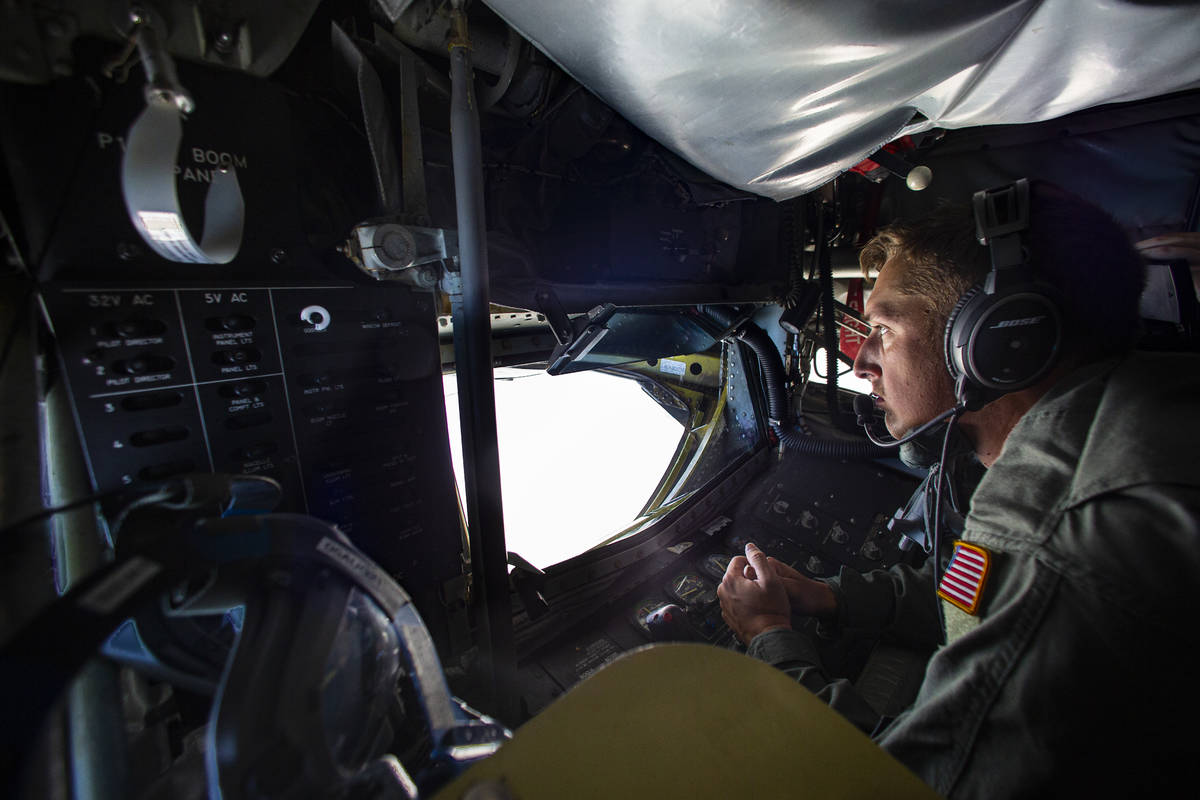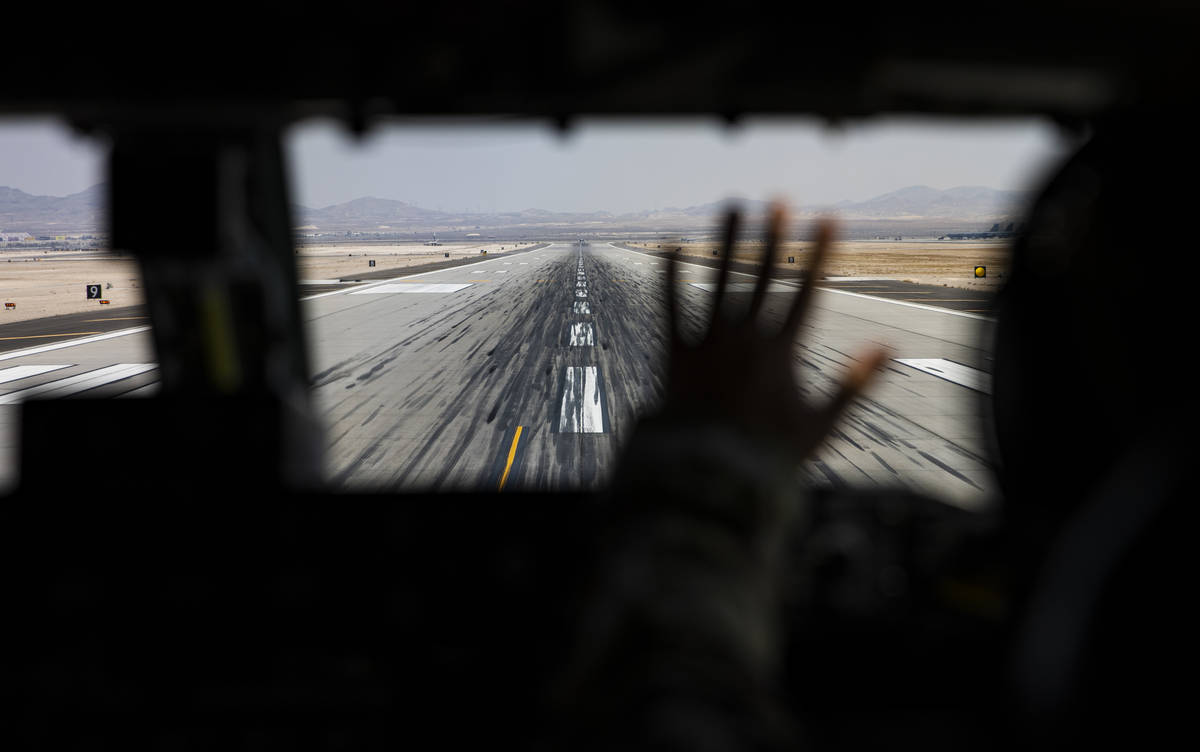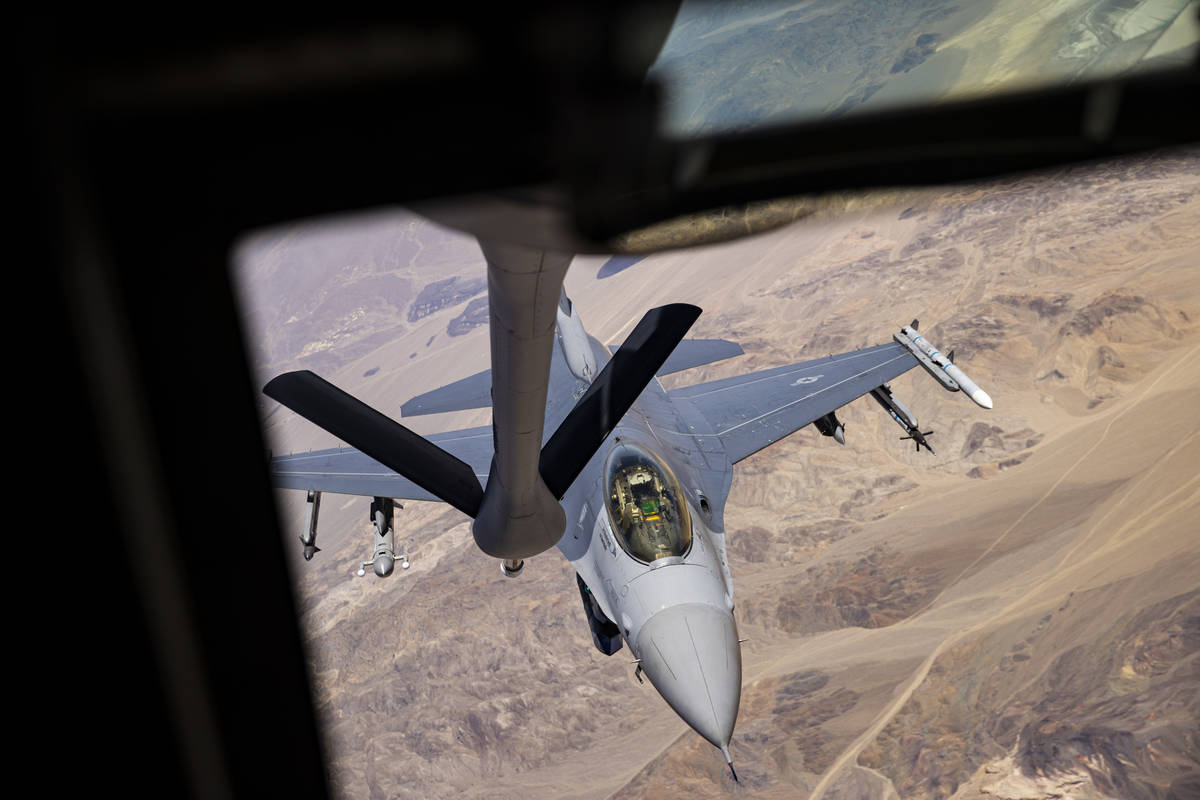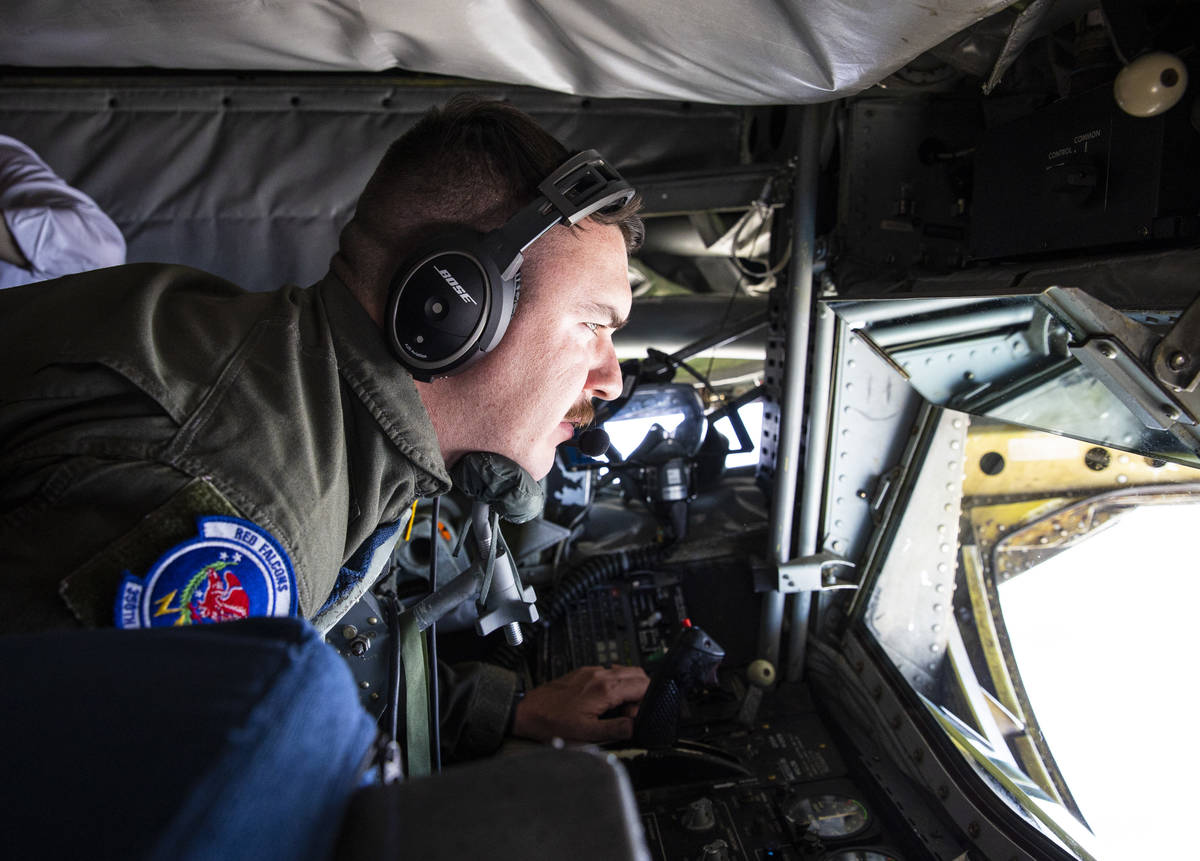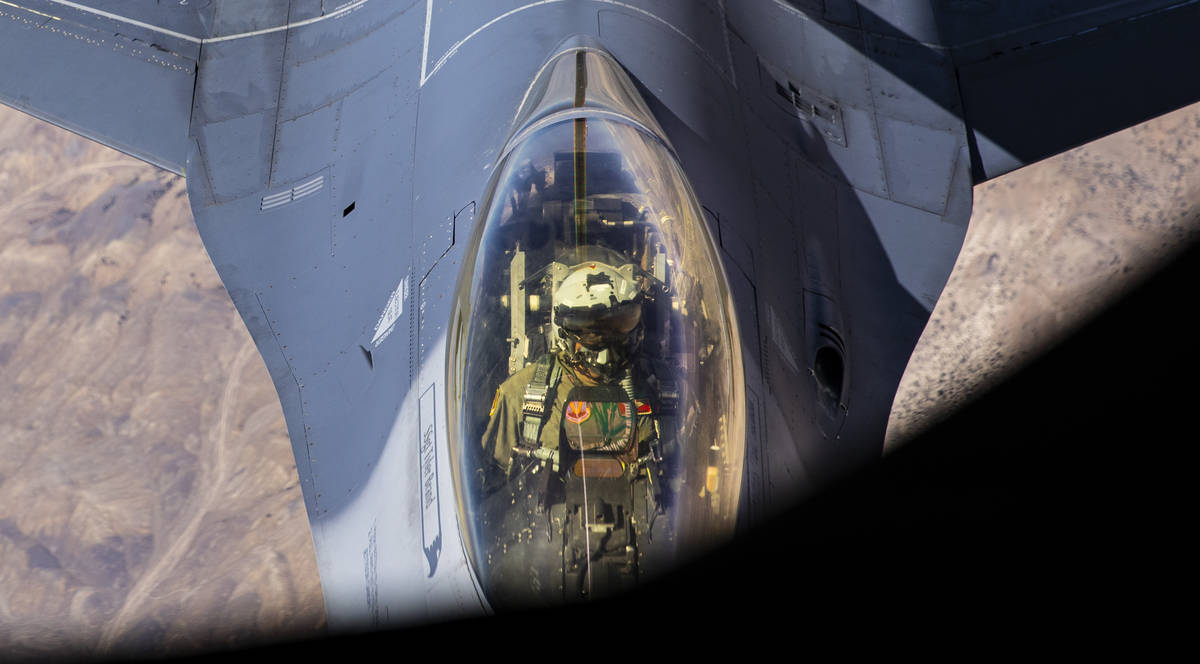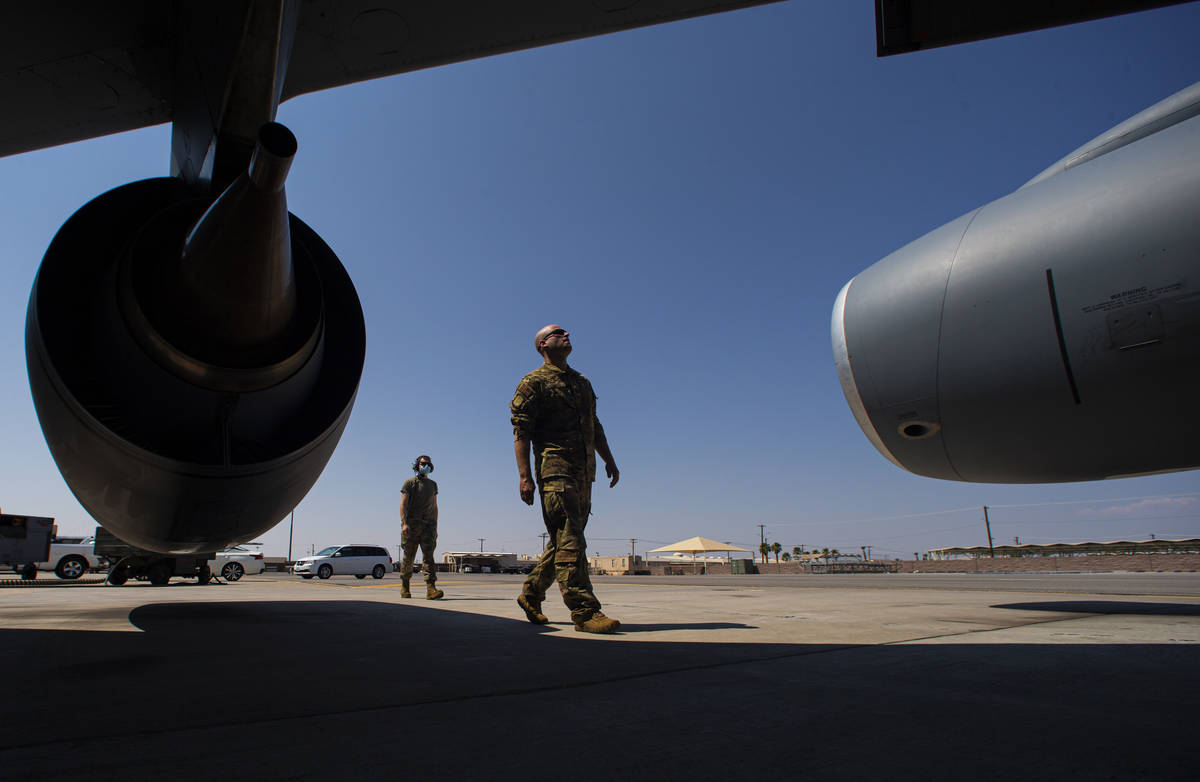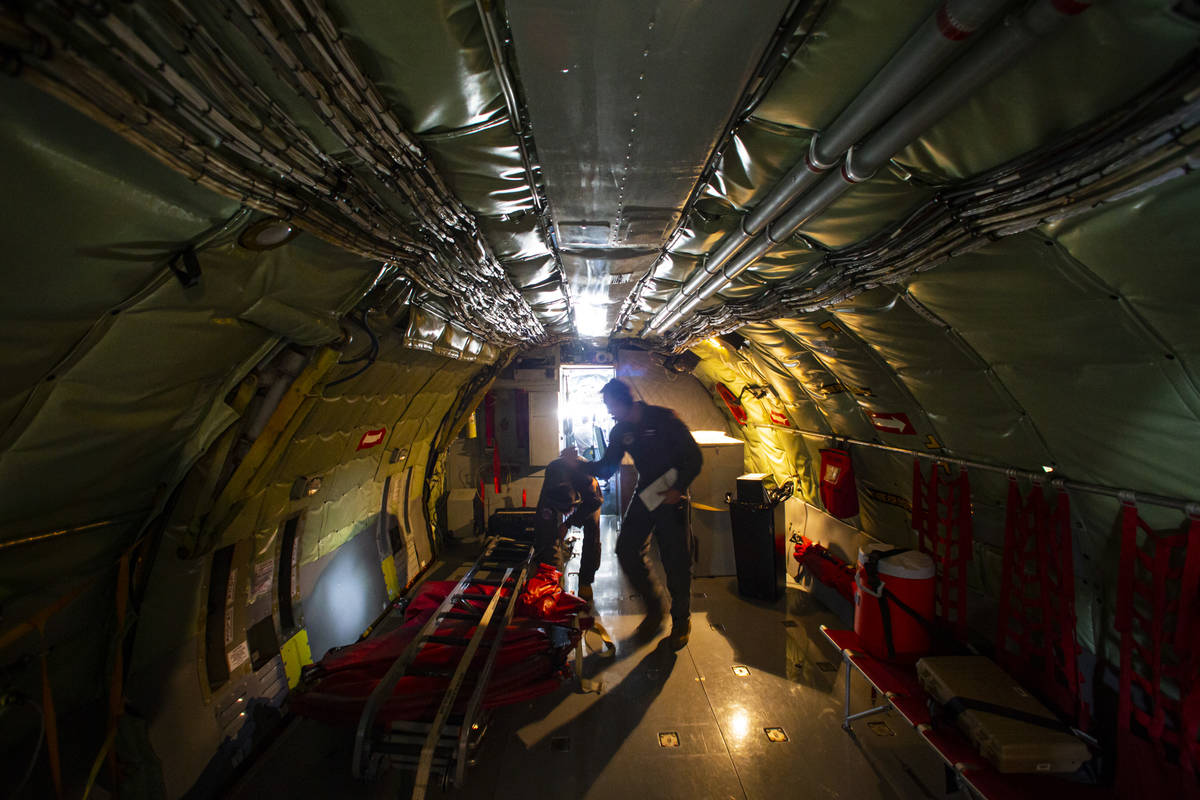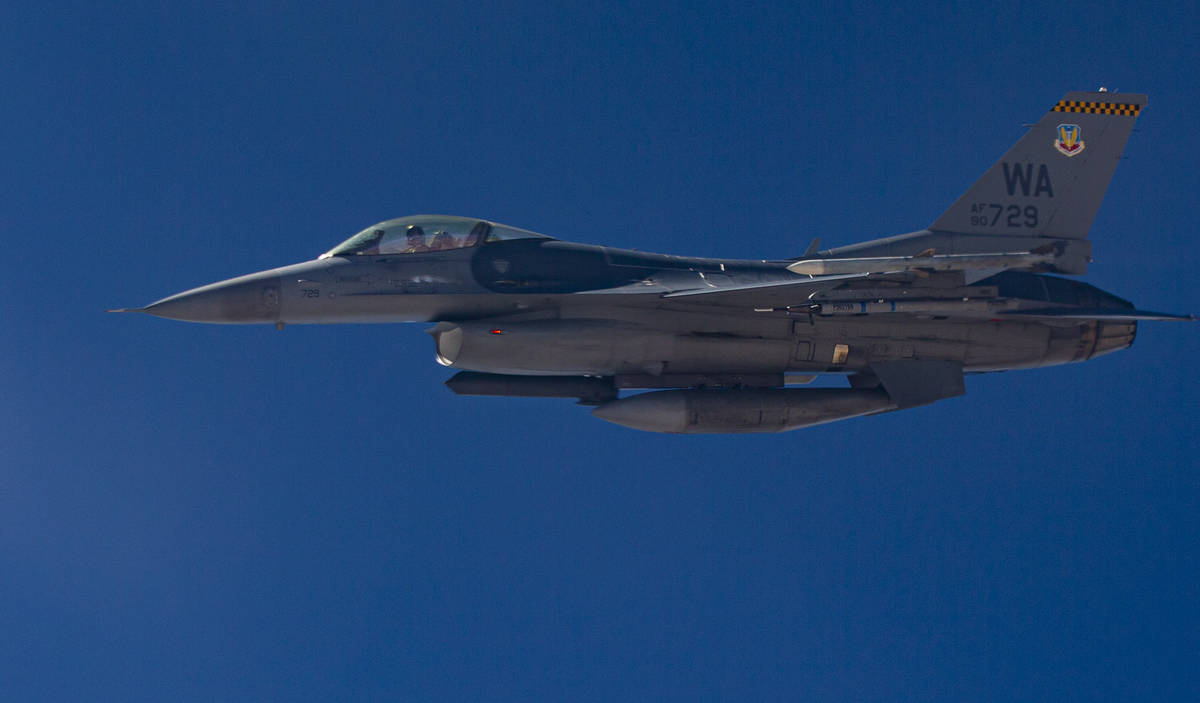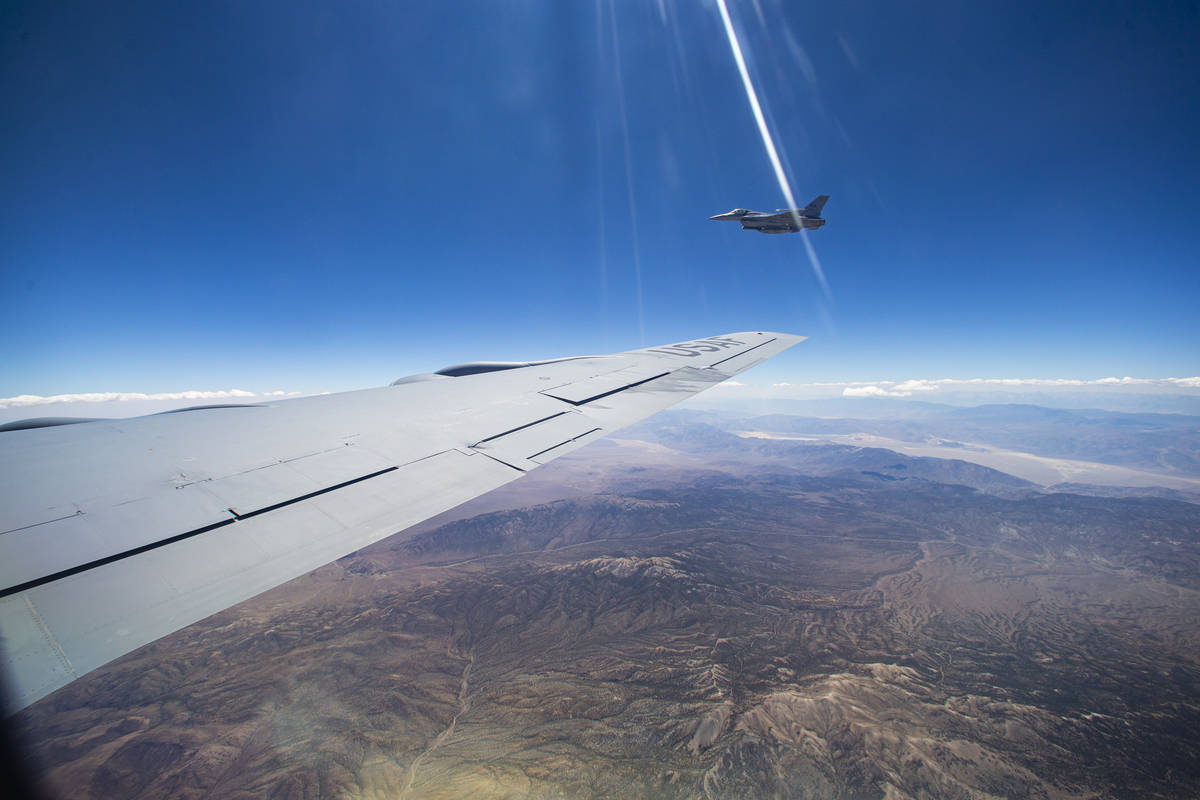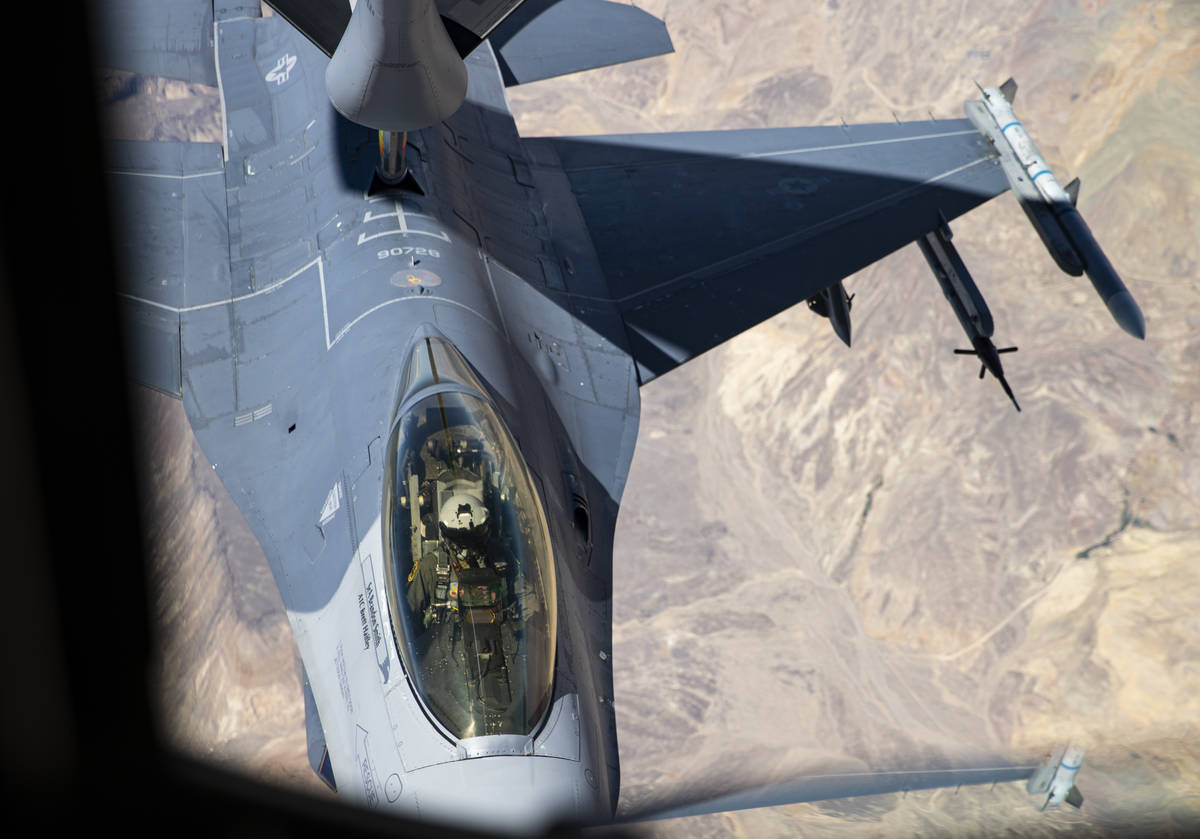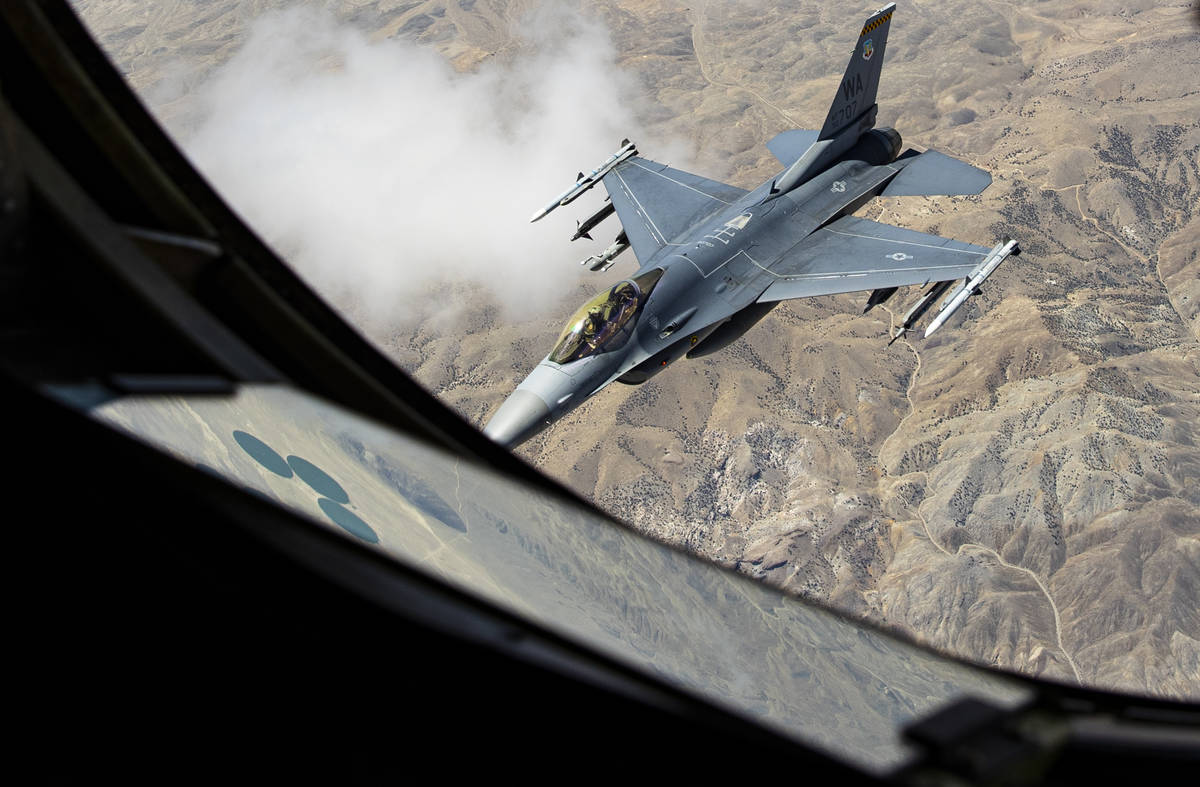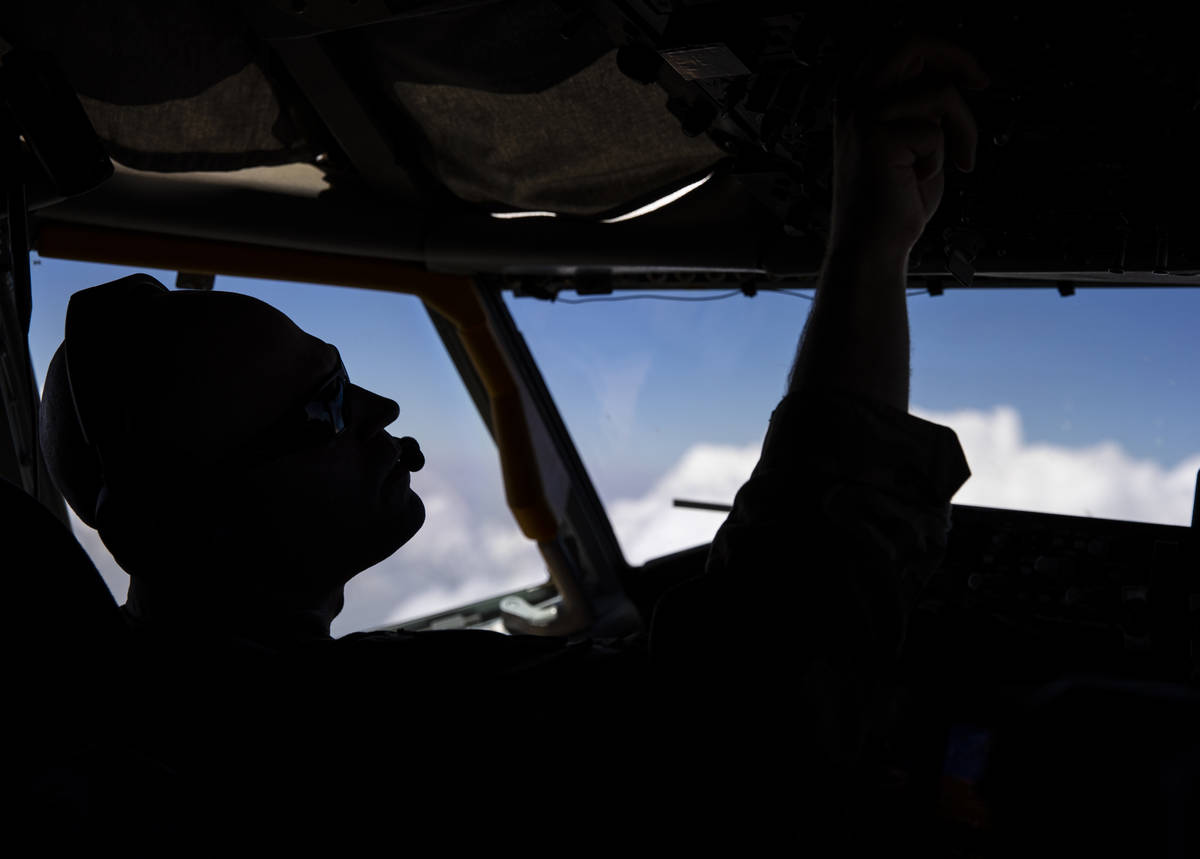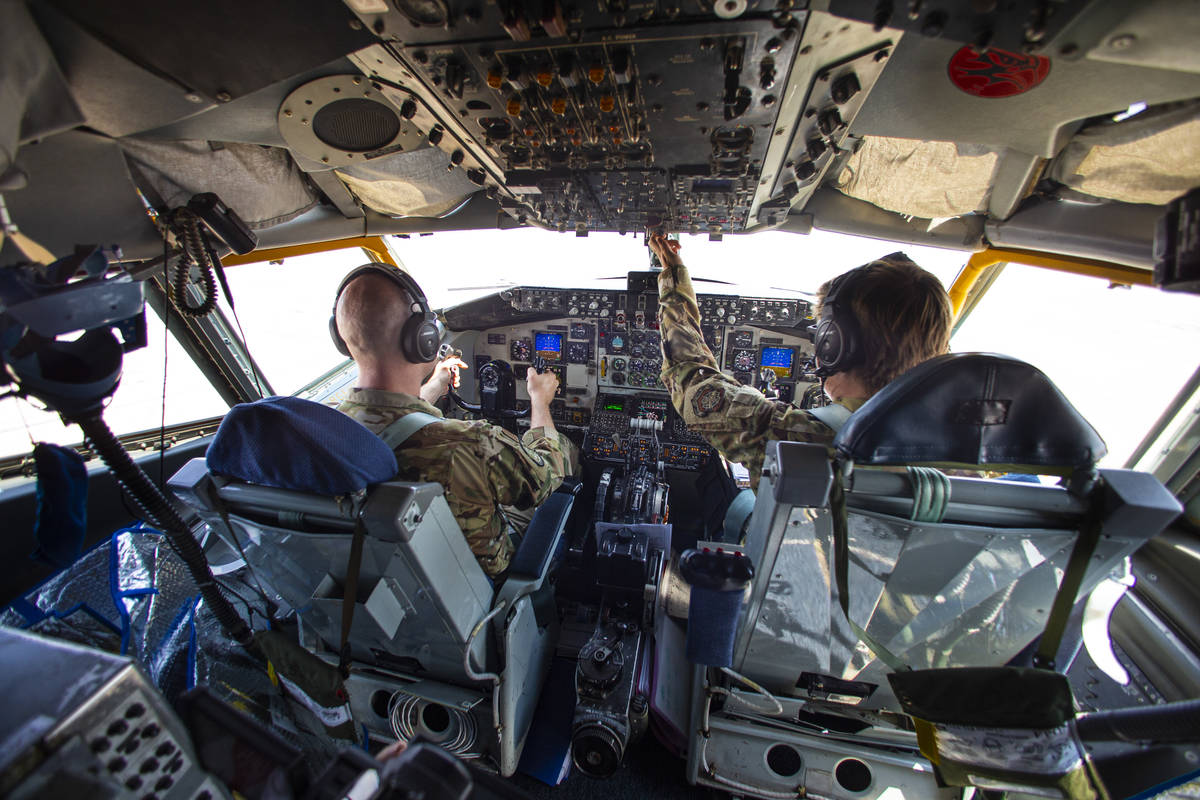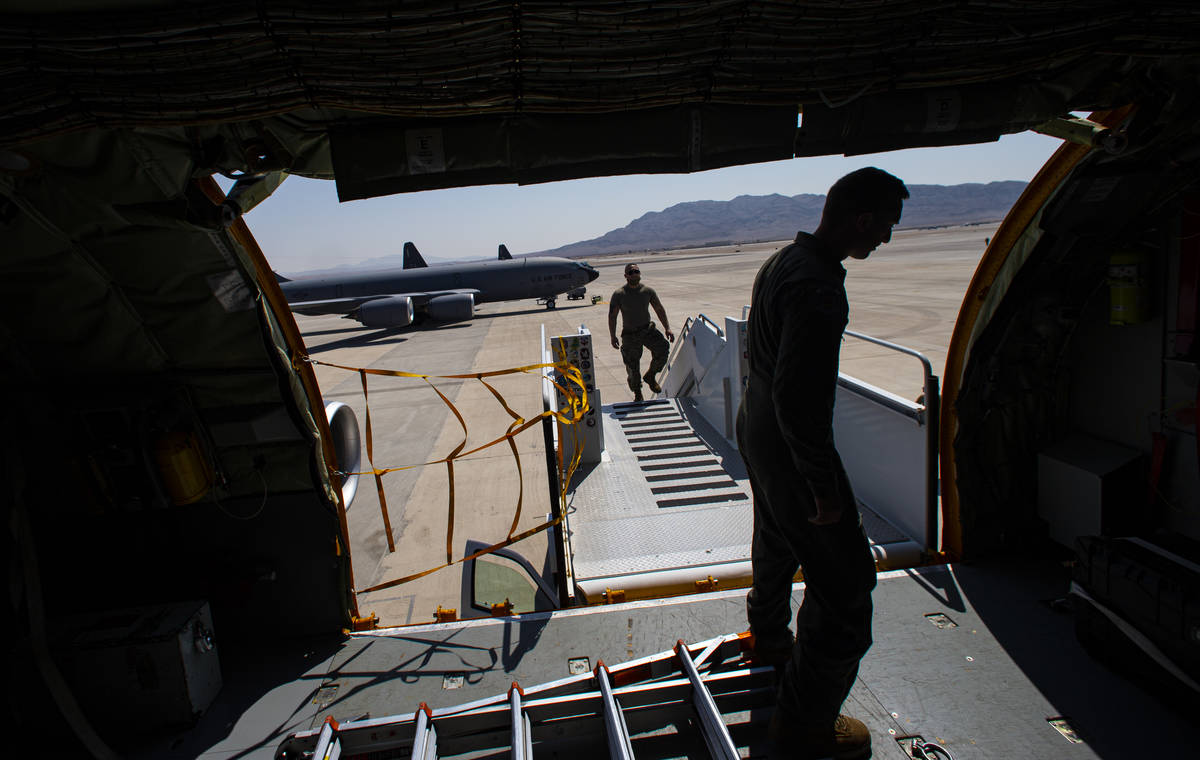‘All done in the air’: Inside Red Flag training at Nellis
The boom operator watched the fighter jet hover below his Boeing KC-135 Stratotanker.
With precision, Airman 1st Class Jonathon Covey lowered the boom carrying the fuel tank. He steadied his control stick as an F-16’s white tail lights blinked.
When the boom hit the target, Covey radioed to the pilots up front. They turned on a pump, which transferred the fuel to the fighter jet in midflight.
“We can give them their gas close to where they’re fighting,” he said. “They can get it all done in the air.”
Covey’s flight was part of a combat training exercise during Red Flag, which is hosted three times a year at Nellis Air Force Base.
Red Flag simulates combat situations in a controlled environment. The goal is to increase the military’s ability to succeed in combat and return home safely.
The other two Red Flag exercises this year involved NATO members, but Red Flag 21-3 includes only the United States. It started July 19 and lasts through Saturday.
On Wednesday, the Stratotanker carried two pilots and two boom operators. It flew in circles 20,000 feet above the Nevada Test and Training Range.
The boom operators transferred fuel to seven jets over fluffy clouds and dusty skies Wednesday.
They operate their machinery from the back of the plane, lying on a pallet on their stomach in what is called the “boom pod.”
To fight nausea while in flight, boom operator Staff Sgt. Jesse Lee chewed on mint gum. He and Covey serve in the 350th Air Refueling Squadron, known as the Red Falcons. They flew to Nevada on the Stratotanker from McConnell Air Force Base in Wichita, Kansas.
The two men both have mustaches and wore green jumpsuits. Their two pilots, Capt. Chase Cooper and Capt. Jessica Rothmeier, were in full uniform.
The temperature in Las Vegas reached 111 degrees Wednesday. In the cockpit, fans blew as to keep the circuit breakers in the 1962 aircraft from overheating.
The Stratotanker is a plane that 26-year-old Covey’s grandfather used to stand guard for, he said.
“This job never gets boring. I absolutely love it,” Covey said. “It’s hard to describe the first time you open up the sliding door and see the ground on your first flight.”
In flight, the pilots tracked at 245 knots — or 281 mph — as their coordinates popped on the screen.
Seven F-16s received fuel on Wednesday. At one point, there was turbulence, and the receiving jet had to back out. But the jet brought it back in, and the mission was able to be completed.
“I don’t have a very big target to hit, so when it starts bouncing, it’s difficult,” Covey said.
Cooper, the chief pilot on the flight, said he was experiencing his first Red Flag. For him, it was good to meet some of the pilots in person.
“It kind of humanizes them, instead of them being a customer or another F-16 pilot,” he said. “They know we support them. We have to be there to keep them in the air for as long as they need.”
And on Saturday, Cooper will fly the Stratotanker again. This time, a bit farther, to his home base in Kansas.
Contact Briana Erickson at berickson@reviewjournal.com or 702-387-5244. Follow @ByBrianaE on Twitter.



